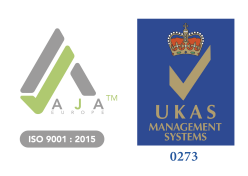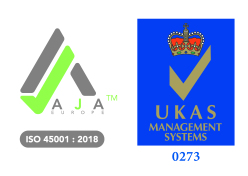It’s Everywhere! – Asbestos Awareness and Safety
It’s the “A” word … Asbestos! And there’s plenty of the stuff around us.
Construction workers used asbestos when building the majority of man-made structures before the year 2000. But then it became apparent that asbestos is a dangerous material that can cause all sorts of health problems. That’s why the government introduced The Control of Asbestos Regulations, which made it illegal to import, supply or use all forms of asbestos and ACMs from 1999. These regulations are still in place today. Therefore, you should not be able to find any asbestos in buildings that were constructed after the year 2000. However, many older buildings still contain asbestos.
In this blog post, we’ll delve further into the types of asbestos that you need to know about.

Amphibole or Serpentine?
Asbestos may fall into the amphibole or serpentine category, depending on the type of minerals it contains.
Properties of Amphibole Minerals
· Straight, like a needle
· Stiff
· Splits along the length
· Barbed end
· Hydrophobic (hydrophobic substances repel and reject water)

Properties of Serpentine Minerals
· Curly
· Long
· Flexible
· Hydrophilic (hydrophilic substances attract and accept water out of the air)
Types of Asbestos
The Control of Asbestos Regulations 2012 (CAR) recognises six types of asbestos:
1. Chrysotile (white asbestos) was discovered in 1850 in Quebec. Chrysotile has a hair-like texture and contains serpentine minerals.
2. Crocidolite (blue asbestos) was discovered in 1805 in South Africa. Crocidolite contains amphibole minerals.
3. Amosite (brown asbestos) – also known as fibrous grunerite – was discovered in 1907 in South Africa. Amosite has a needle-like texture and contains amphibole minerals.
4. Actinolite
5. Anthophyllite
6. Tremolite
Actinolite, Anthophyllite and Tremolite weren’t commonly used in the UK construction industry before it became illegal to construct using asbestos. These types of asbestos contain amphibole minerals.
Although we often refer to asbestos types as white, brown or blue to identify the three main types found in the UK, we can’t visually identify asbestos by its colour.
Keep in mind that all forms of asbestos are hazardous.
Monitoring Asbestos
Though we can find asbestos is in most buildings in the UK, the material isn’t necessarily dangerous as long as it remains undisturbed. If you identify asbestos in a building that is in good condition and out of the way (where it will not be disturbed or damaged), then it may be advisable to leave it in its current location and condition.
In this case, you should review the asbestos in regular risk assessments and ensure that anyone performing risk assessments, performing surveys on asbestos, testing/analysing asbestos or even removing asbestos is qualified and competent to do so. Remember that simply taking asbestos awareness training doesn’t qualify you to do any of the above.
ETD’s Online Asbestos Awareness Course
To learn more about the different types of asbestos, you can take ETD’s Asbestos Awareness Course. Follow these five simple steps to get started.
· Create a free company account or single user account, selecting the £12+ VAT payment scheme.
· Purchase your user accounts using the online Elavon platform.
· For company accounts, create your user accounts (using unique usernames) and “activate” each user by pressing the “activate” button.
· Purchase your online training by selecting the courses that you require. Ticking a course will instantly assign it to the user’s account.
· Once the courses have been assigned, single users can access the course under “my courses”. Company users can log into their account, go to “my courses” and start the training.

If you require any assistance with the online training, then please contact our support team, who will be happy to help.







